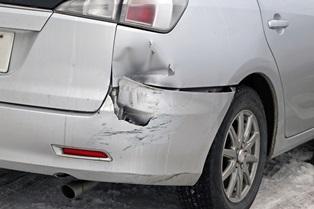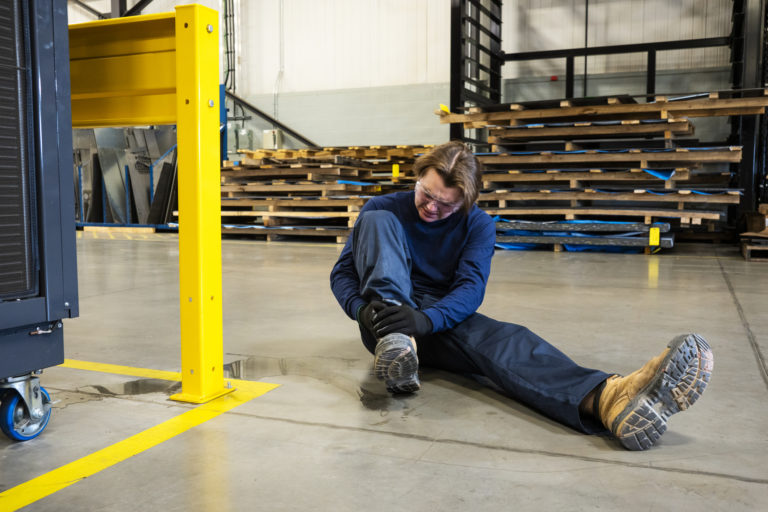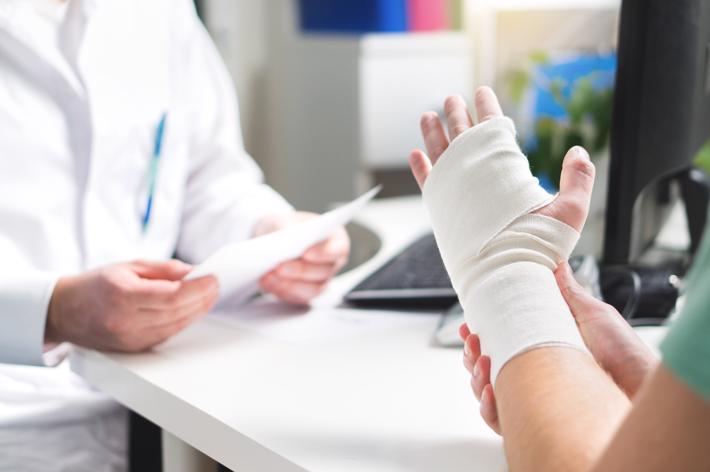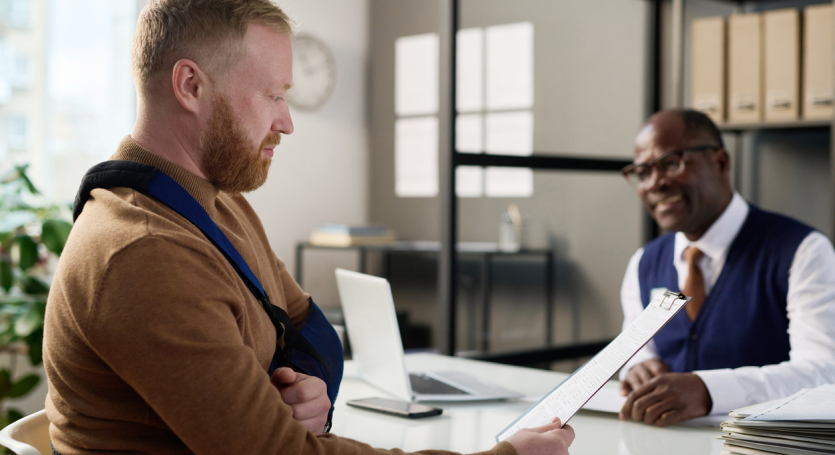Rear-Ended Car Accidents: What You Need to Know
Rear-ended car accidents are a dime a dozen, and if you’ve been involved in one, you know firsthand how jarring they can be. Not only can they cause serious injuries, but they can also leave you feeling shaken and confused about what to do next. That’s why it’s important to know what to do if you’re ever rear-ended.
When it comes to rear-ended car accidents, there are a few things you should always keep in mind. First, it’s important to stay calm and collected. This can be difficult, especially if you’re injured, but it’s important to try to remain in control of the situation. Once you’ve calmed down, you can start to assess the damage and figure out what you need to do next.
What to Do After a Rear-Ended Car Accident
1. Pull over and check for injuries. If you or anyone else involved in the accident is injured, call 911 immediately. Even if you don’t think you’re injured, it’s important to get checked out by a doctor just to be safe.
2. Exchange information with the other driver(s) involved. This includes your name, address, phone number, insurance information, and license plate number.
3. Take pictures of the damage. This will help you when you file an insurance claim.
4. Get a copy of the police report. This will provide you with an official record of the accident.
5. Contact your insurance company. You’ll need to file a claim as soon as possible.
6. Get a medical evaluation. Even if you don’t think you’re injured, it’s important to get checked out by a doctor just to be safe. Some injuries, like whiplash, can take days or even weeks to show up.
7. Hire an attorney. If you’re seriously injured or if the other driver is disputing fault, you may want to consider hiring an attorney. An attorney can help you protect your rights and get you the compensation you deserve.
Rear-Ended Car Accidents: Navigating Fault and Seeking Justice
Rear-ended car accidents are a common occurrence on our busy roads, leaving drivers shaken and confused about who’s to blame. Determining fault in these incidents is crucial, as it can significantly impact insurance claims and legal consequences. Typically, the driver who strikes the vehicle from behind bears the weight of liability.
Determining Fault
Establishing fault in a rear-end collision often involves examining several factors, including the following:
- Negligence: Proving negligence is key. This means showing that the at-fault driver failed to act with reasonable care, resulting in the accident.
- Following distance: Maintaining an appropriate following distance is crucial. If the at-fault driver was following too closely and couldn’t stop in time, it’s a strong indication of negligence.
- Distracted driving: Texting, talking on the phone, or engaging in other distracting activities while driving can lead to rear-end collisions. Evidence of distracted driving can strengthen the case against the at-fault driver.
- Vehicle maintenance: If the at-fault driver’s vehicle had faulty brakes or other mechanical issues, it could contribute to the accident. Proving this can help establish fault.
- Witness accounts: Eyewitness testimony can provide valuable insight into the events leading up to the accident and help determine fault.
In some cases, multiple factors may contribute to the accident. For instance, if the driver who was rear-ended suddenly stopped without warning, it may reduce the fault assigned to the at-fault driver. However, proving this defense can be challenging.
Rear-Ended Car Accidents: What to Do and How to Protect Yourself
Car accidents are never fun, but when you’re the one who gets rear-ended, it can be especially frustrating. Not only do you have to deal with the hassle of getting your car fixed, but you may also be dealing with injuries and insurance companies. If you’ve been rear-ended, it’s important to know what to do to protect yourself and your rights.
Steps After An Accident
If you’ve been rear-ended, it’s important to stay calm and assess the situation. Check yourself for injuries, and then check on any passengers in your car. Once you’ve made sure everyone is okay, you can start to take the following steps:
- Pull over. If possible, pull over to the side of the road. This will help keep you and your passengers safe, and it will also prevent further accidents from happening.
- Call the police. Even if you don’t think you’re injured, it’s always a good idea to call the police after a car accident. The police will be able to create a report that will document the accident and provide you with a copy. This report will be helpful if you need to file an insurance claim or take legal action later on.
- Exchange information. Once the police arrive, be sure to exchange information with the other driver(s) involved in the accident. This includes your name, address, phone number, insurance company, and policy number. Noting the make, model, and license plate numbers of their vehicles. Using your phone, snap a photo of their driver’s licenses and insurance cards.
- Take photos. If you have a camera, take pictures of the accident scene. This will help you document the damage to your car and the other vehicles involved. Equally important is getting photos of any visible injuries you or your passengers may have sustained.
- Seek medical attention. Even if you don’t feel injured, it’s important to see a doctor after a car accident. Some injuries, such as whiplash, may not show up right away. Seeing a doctor will help you rule out any serious injuries and get the treatment you need.
Dealing With Insurance Companies
After you’ve been in a car accident, you’ll need to file a claim with your insurance company. The insurance company will investigate the accident and determine who is at fault. If you’re found to be at fault, your insurance rates may go up. Here are a few tips for dealing with insurance companies:
- Be honest and accurate. When you file your claim, be sure to be honest and accurate about what happened. Don’t try to exaggerate your injuries or the damage to your car. Conversely, if asked, do not downplay the severity of the injuries or damage.
- Get everything in writing. When you’re dealing with an insurance company, it’s important to get everything in writing. This includes your claim, any correspondence with the insurance company, and the final settlement offer. This will help you protect yourself in case there are any disputes later on.
- Don’t sign anything until you’ve had a chance to review it. When you’re signing anything for an insurance company makes certain you’ve read and fully understand what you’re signing. If you don’t understand something, ask for clarification. Also, never sign a blank document.
Rear-Ended Car Accidents: What to Do
Being rear-ended is never fun. It can be a scary and confusing experience, especially if you’re not sure what to do. That’s why it’s important to know what steps to take after a rear-end collision. Here’s a guide to help you out:
1. Stay Calm and Pull Over
If you’ve been rear-ended, the first thing you need to do is stay calm and pull over to the side of the road if possible. It’s important to get out of the way of traffic and avoid causing further accidents. Once you’re pulled over, turn on your hazard lights and get out of your car.
2. Check for Injuries
Once you’re out of your car, check yourself and your passengers for injuries. Even if you don’t feel any pain at first, it’s important to get checked out by a doctor. Some injuries, like whiplash, may not show up right away.
3. Exchange Information
Once you’ve checked for injuries, it’s time to exchange information with the other driver. This includes your name, address, phone number, insurance information, and license plate number. It’s also a good idea to take pictures of the damage to both cars. If there are any witnesses, get their names and contact information as well.
4. Report the Accident
In most states, you are required to report any car accident to the police. This is especially important if there are any injuries or significant damage. The police will create a report that can be used by your insurance company to process your claim.
Here are some additional tips for reporting a rear-end accident:
- Be prepared to provide the police with the following information: Your name, address, phone number, insurance information, license plate number, and a description of the accident.
- If there are any witnesses, be sure to provide their names and contact information to the police.
- Take pictures of the damage to both cars and the scene of the accident.
- Get a copy of the police report.
5. Contact Your Insurance Company
As soon as possible after the accident, you should contact your insurance company to report the claim. They will need to know the details of the accident, including the other driver’s insurance information. Your insurance company will then investigate the claim and determine who is at fault.
Once your insurance company has determined who is at fault, they will begin the process of paying for your damages. This may include paying for medical expenses, car repairs, and lost wages.
If you have any questions about the claims process, be sure to contact your insurance company. They can help you understand your coverage and get you the benefits you deserve.
Rear-ended car accidents can be a hassle, but they don’t have to be a nightmare. By following these steps, you can protect yourself and your rights.
Rear-Ended Car Accidents: What to Do
Rear-ended car accidents are all too common, and they can be extremely frustrating and confusing. If you’ve been in one, you’re probably wondering what to do next. Here are a few steps to help you get started:
Safety First
The most important thing is to make sure that you and your passengers are safe. If you’re able, pull over to the side of the road. If you’re not able to pull over, turn on your hazard lights and stay in your car until help arrives.
Call the Police
You should call the police if there are injuries or significant damage. The police will be able to create a report of the accident, which will be helpful for insurance purposes. They can also help to direct traffic and ensure everyone’s safety.
Exchange Information
Once you’ve called the police, exchange information with the other driver(s) involved in the accident. This includes your name, address, phone number, insurance information, and license plate numbers.
Take Pictures
If you have a camera, take pictures of the accident scene. This will help to document the damage and provide evidence for your insurance claim.
See a Doctor
Even if you don’t feel injured, it’s important to see a doctor after a rear-ended car accident. Some injuries, such as whiplash, may not show up immediately. Seeing a doctor will help to ensure that you get the treatment you need.
What If I Was at Fault?
If you were at fault for the rear-ended car accident, you may be feeling overwhelmed and wondering what will happen next. The most important thing to do is to stay calm and cooperate with the police. You’ll also need to contact your insurance company and report the accident. Your insurance company will be able to help you file a claim and get your car repaired or replaced.
Protecting Your Rights
It’s important to protect your rights after a rear-ended car accident. This means being aware of your legal options and taking steps to preserve your evidence. Here are a few tips:
1. Don’t admit fault to the other driver or the police. Even if you believe you were at fault, it’s important to let the insurance companies investigate and determine who was responsible.
2. Get a copy of the police report. The police report will contain important information about the accident, such as the names and contact information of the drivers involved, the location of the accident, and the damage to the vehicles.
3. Take pictures of the accident scene. Pictures can help to document the damage and provide evidence for your insurance claim.
4. Get medical attention even if you don’t feel injured. Some injuries, such as whiplash, may not show up immediately. Seeing a doctor will help to ensure that you get the treatment you need.
5. Don’t sign anything without talking to a lawyer. If you’re being pressured to sign a release or settlement, don’t do it without first talking to a lawyer. A lawyer can help you understand your rights and protect your interests.
Rear-Ended Car Accidents: What You Need to Know
Getting rear-ended in a car accident can be a frightening and confusing experience. It’s important to know what to do in the aftermath of such an accident, especially if you or someone else has been injured. Here’s a comprehensive guide to help you understand your legal rights, insurance options, and steps to take after a rear-end collision.
Legal Action
Filing a legal claim may be necessary if the other driver was negligent and caused your injuries or damages. Here are the key steps involved:
- Gather evidence from the accident scene, such as photos, witness contact information, and a police report.
- Determine the extent of your injuries and the value of your property damage.
- Consult with an experienced attorney about your legal options and the potential for compensation.
- File a claim with the at-fault driver’s insurance company and negotiate a settlement.
- Proceed with a lawsuit if negotiations fail or the insurance company denies your claim.
Remember, the insurance company’s goal is often to minimize their payout. Seek legal representation to ensure your rights are protected and you receive fair compensation for your losses.





Leave a Reply